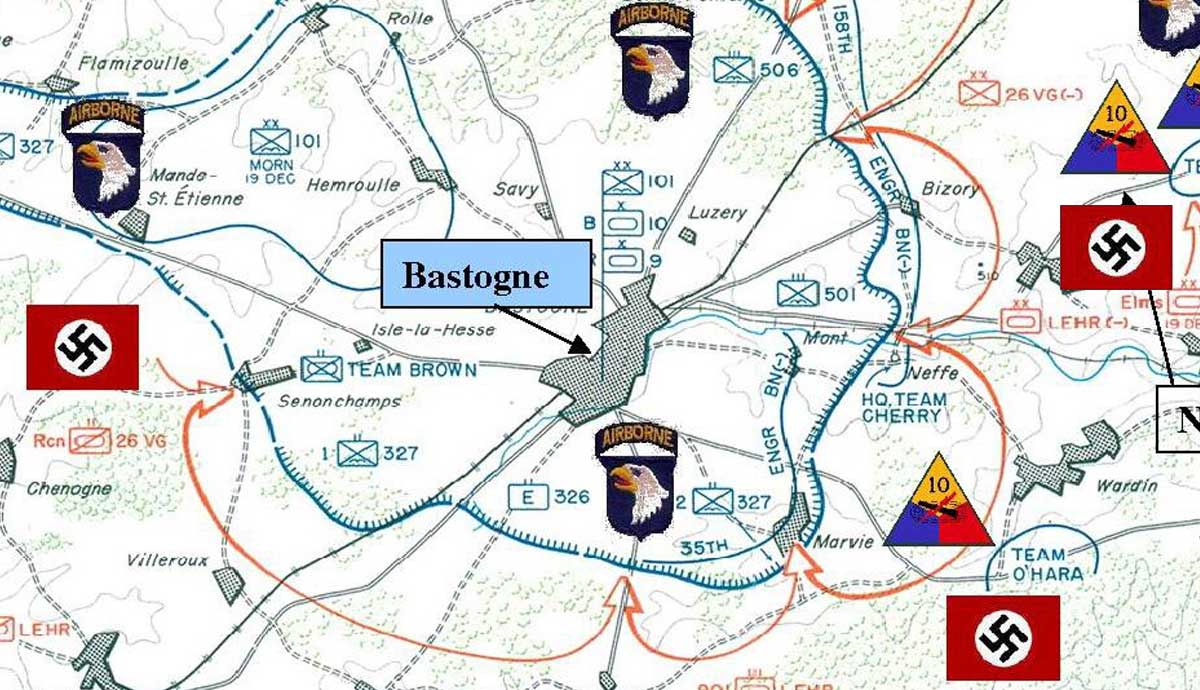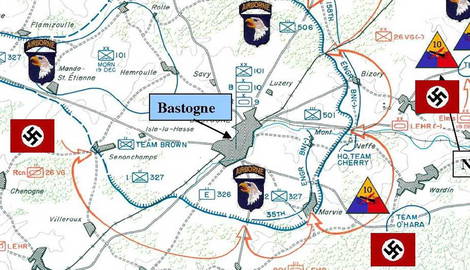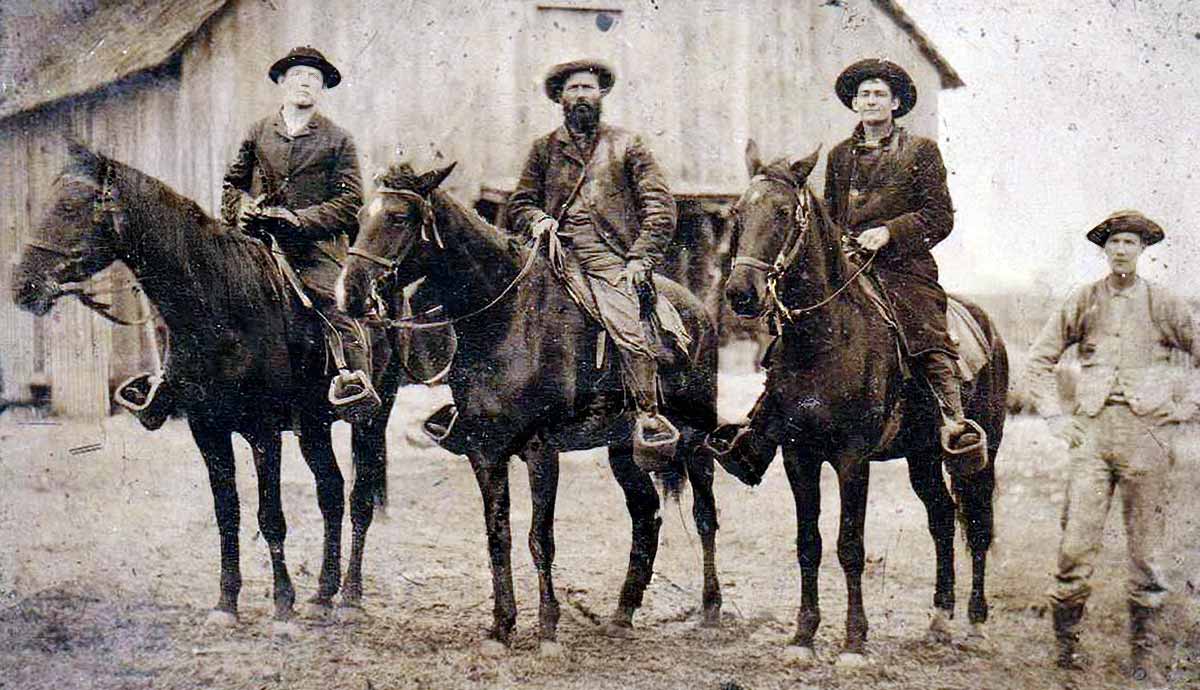
By September 1944, Germany sat in an unenviable strategic position. The Soviet Red Army ground forward closer to Berlin daily, its offensives limited by how much gas they carried. Germany’s Wehrmacht slowly rebuilt itself in the West, having lost over 300,000 men after the trouncing in France and behind stronger defenses along the Reich’s borders. But most thought an inexorable defeat loomed.
But Hitler, ever the gambler, hatched a plan: attack through the Ardennes, split the Allied armies, and retake Antwerp. Hitler’s risky plan counted on shocking the Allies to negotiate a treaty so his armies could turn around and defeat the Soviets. Hitler’s shocked generals could only obey and prepare.
Germany’s Dilemma

By December, 200,000 men and five hundred armored vehicles in three armies secretly assembled for Operation “Wacht Am Rhein” or Watch on the Rhine. The attack plan would hit the Americans in the Ardennes, considered a weak spot and the route used for the wildly successful 1940 Invasion of France. The Sixth Panzer Army would lead, covered in unusually heavy winter fog, to hide from superior Allied air forces as they struck along an eighty-mile front.
The Shocked Reaction

The sudden Nazi onslaught in a quiet sector caught the Allies flatfooted-all buildup signs got written off. From Monschau, Germany, to Echternach Luxembourg, the Wehrmacht attacked, surrounding or destroying American units and creating a bulge in the lines. But stiff resistance, the hilly forested terrain, and even traffic jams slowed the German timetable.
Near panic and calls for reinforcements reached Paris, resulting in lockdowns or password challenges, such as “Who’s centerfield for the Yankees?” in what became “Battle of the Bulge.”
Adding to Allied misery, German commandos led by the infamous Otto Skorzeny dressed as U.S. soldiers infiltrated far ahead, causing trouble like switching road signs. Panzers, or tanks in German, pressed ahead, capturing important rail and road junctions after stiff fights.
After the initial shock, Allied leaders like Eisenhower, Monty, and Bradley got wheels in motion. Whole commands moved around, and reinforcements rushed in. For example, the 101st Airborne Division rushed to the Belgian town of Bastogne, a vital road junction, joining the 80,000 soldiers already fighting. Eisenhower also ordered the American Third Army to pivot and head for the Ardennes.
Bastogne Is the Key

Bastogne, a small Belgian junction of seven roads, became the focus during the Battle of the Bulge. The Americans slowed their enemy enough for the 101st Airborne Division’s arrival. With that stiff defense, the German mobile divisions bypassed the town, racing for the Meuse River.
Despite repeated vicious attacks, the 101st held Bastogne until relieved by General George Patton’s Third Army on Christmas Day 1944. Patton swiveled his army as requested while still fighting miles away, something almost impossible. He ordered his men not to stop.
The famous event that made the Siege of Bastogne famous resulted from the German demand for the town’s surrender on December 22, 1944. The Germans threatened annihilation if the Americans didn’t surrender. The American general, Anthony McAuliffe, responded with “NUTS!”
The Massacres

The Battle of the Bulge, too, suffered the massacre of prisoners and civilians. One SS battle group, Kampfgruppe Peiper, led by cold-blooded Colonel Joachim Peiper, captured one hundred American soldiers on December 17, 1944. Knowing prisoners would slow him down and behind schedule, Peiper’s men gunned down the soldiers near Malmedy, Belgium, which became the Malmedy Massacre. Two days later, his SS soldiers gunned down over one hundred civilians.
And again, several days later, Peiper’s men shot nineteen and then fifty American soldiers at other villages. Upon finding out from several Malmedy survivors, American resistance stiffened.
No Further

The German panzer divisions in the northern part of the Bulge, were the armored fist of the Wehrmacht. Their orders had them dashing west for the Meuse River, seizing bridges and crossings. They almost seized those points despite critical fuel shortages and delays. By December 25, 1945, in a pitched battle with Allied tank units, the German 2nd Division was stopped just several miles from Dinant, France.
This represented the furthest west Hitler’s armies got. With clearing skies for Allied planes to pounce and oncoming Allied reinforcements, his gamble failed. Fighting to clear the Bulge and defeat the Germans took until January 25, 1945. The fighting in parts of France, Belgium, and Luxembourg showed the Battle of the Bulge as a pipe dream from Hitler.










